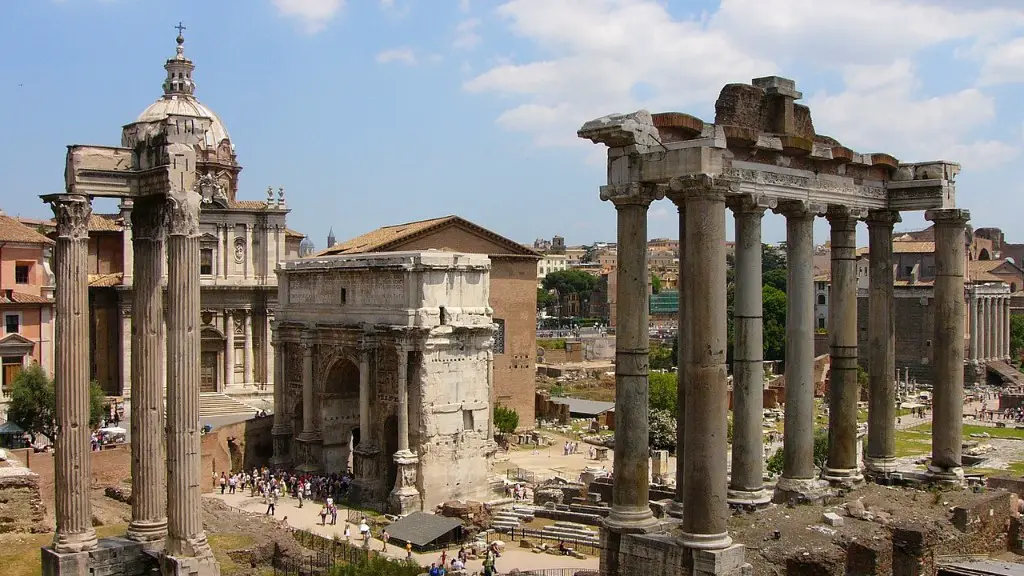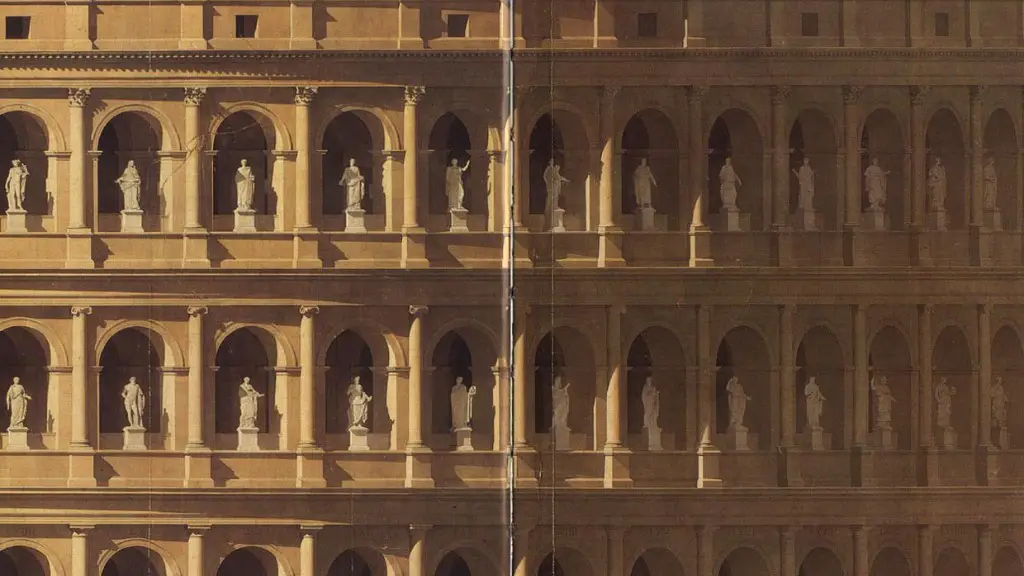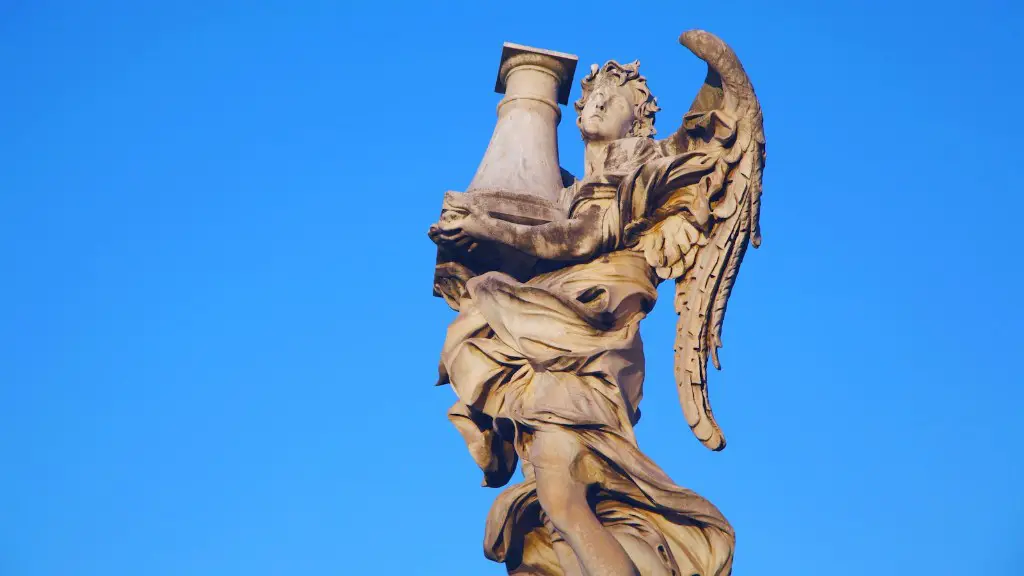The ancient Romans traded with a number of other countries during their time. One of the main things they traded was slaves. Other items they traded included food, wine, and other luxury items.
The ancient Romans traded with other countries primarily through their system of sea-based commerce. This allowed them to reach a wide range of markets, including those in North Africa, the Levant, Greece, and even India. The types of goods traded varied widely, but some of the most popular items included wine, olive oil, salt, metals, and textiles.
What items did Romans trade?
The Roman Empire was a major trade center during its time. Important trade items included metals and olive oil from Spain and Africa, grain from Egypt, Africa and the Crimea, spices and silks from the east and wine from France and Italy. These items were carried in large jug-like red clay amphoras on square-sailed merchant ships.
The Romans were very involved in trading with other countries. Spain, France, the Middle East and north Africa were the main trading partners. The Romans also imported beef, corn, glass, iron, lead, leather, marble, olive oil, perfumes, timber, tin and wine. Britain sent out lead, woollen products, and tin – in return they imported wine, olive oil, pottery and papyrus.
Why did the Romans begin to trade with other countries
The Roman Empire was one of the most powerful empires in the world for centuries. In order to maintain its power, the empire had to establish and extend trade routes to the East. Every year, ships laden with Mediterranean commodities would sail to the ports of India and China, bringing back exotic luxuries, such as cinnamon, ivory, pepper, and silk. These trade routes not only helped to keep the Roman Empire wealthy, but also allowed its citizens to enjoy a wide variety of luxury goods.
Grapes, oil, and grain were a few of the major exports from Rome. These crops were used to make items such as olive oil, wine, and cereals, which were then exported. Other exports from Rome included pottery and papyrus (paper). Rome also imported some food items, such as beef and corn.
What did the Romans trade with Europe?
The Romans imported a wide variety of materials from their trading partners, which included Spain, France, the Middle East, and North Africa. Some of the commodities they traded were beef, corn, glassware, iron, lead, leather, marble, olive oil, perfumes, purple dye, silk, silver, spices, timber, tin, and wine. Britain’s exports to Rome included lead, woollen products, and tin.
The Eastern African coast was an attractive destination for many Roman merchants because it offered a wide variety of precious exotic goods, including ivory, myrrh, incense, tortoise shells, and slaves. Rome’s trade with Africa not only provided the empire with valuable resources, but also helped to spread Roman culture and influence throughout the region.
What did Rome trade with China?
The Silk Road was an ancient trade route that linked China with the West. It was used to transport goods and ideas between the two great civilizations of Rome and China. Silk went westward, and wools, gold, and silver went east. China also received Nestorian Christianity and Buddhism (from India) via the Silk Road.
The Garamantes were a ancient people who lived in the Sahara desert. They were known for their trading skills and for providing the Romans with foodstuffs, exotic Sub-Saharan slaves, and possibly textiles, salt, gold, and ivory in exchange for Roman wine, olive oil, and pottery. The Garamantes were a proud and powerful people and their culture flourished for many centuries.
What was ancient Rome’s economy and trade
The Roman economy was based on agriculture, which relied on large farms run by slaves. The Romans also made money from mines, and rich Romans could buy luxuries from all over the world. The Roman economy was very different from the modern economy, and it is interesting to learn about how the Romans made and spent money.
The Roman army was responsible for keeping the roads and sea routes safe for traders. This allowed trade to flourish between different areas of the empire, helping the economy to grow. People could sell what they produced in their own area to others who needed those goods. They could also buy things that they couldn’t produce themselves, which increased the variety of goods available to everyone.
What are 3 things Rome gave to the world?
Ancient Rome was a major source of inspiration for the development of modern infrastructure. The ancient city was able to maintain impressive structures and sanitation systems through an extensive network of roads and aqueducts. Ancient administrations also developed welfare programs that provided basic necessities for the citizens. The elements of surgery developed in ancient Rome have also been adopted and improved upon in modern times.
In ancient times, olive oil and wine were Italy’s main exports. Two-tier crop rotation was practiced, but farm productivity was overall low, around 1 ton per hectare. With the advancement of technology and the introduction of new methods of cultivation, farm productivity has increased significantly, but the exports of olive oil and wine remain an important part of the Italian economy.
What did Egypt trade with Rome
The Egyptians greatly valued natural resources from other lands, and so they established trade routes in order to acquire these materials. In exchange for their own goods, they traded gold, papyrus, linen, and grain for cedar wood, ebony, copper, iron, ivory, and lapis lazuli. The lapis lazuli was particularly prized, as it was used for carving and inlaying jewelry and other objects.
The Romans in Britain brought with them many items that we take for granted today, such as pottery, glass, olive oil, wine and salt. They also exported a great deal of metal and other items such as wheat, cloth and slaves.
What did the Romans trade with Indians?
The Roman Empire imported Indian lime, peach, and various other fruits for medicine Western India, as a result, was the recipient of large amounts of Roman gold during this time. Since one must sail against the narrow gulfs of western India, special large boats were used and ship development was demanded.
The Roman world was a very connected place, with people and goods moving back and forth between all corners of the empire. This made for a very diverse and cosmopolitan culture, with influences from all over the world coming together in one place.
Did Rome trade slaves
The Roman Empire was built on the back of slave labor. Slaves were used for everything, from manual labor to entertainment. The Romans also traded enslaved people across and within the borders of Roman territory. This trade was a major source of income for the Empire.
The Roman Empire was a slave society, which means that owning and trading slaves was an important part of the economy and social structure. Consequently, the topic of slavery in the Roman Empire has been studied extensively by modern historians.
Warp Up
The ancient Romans traded a variety of goods with other countries. They traded things like food, wine, olive oil, tools, and other everyday items. They also traded luxury items like jewelry, art, and pottery.
The ancient Romans traded a variety of goods with other countries. They traded food, wine, olive oil, and other commodities. They also traded slaves, which was a very profitable business.





